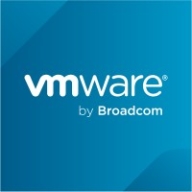

VMware Cloud Director and ServiceNow IT Operations Management compete in the IT management and cloud services category. Based on feature capabilities, VMware Cloud Director seems to have an advantage in hybrid cloud integrations, while ServiceNow IT Operations Management stands out in comprehensive IT service management functions.
Features: VMware Cloud Director offers extensive hybrid cloud capabilities, robust automation, and exceptional multi-tenancy and scalability ideal for enterprises. Its integration with diverse cloud services supports ease of use and self-service functionality. ServiceNow IT Operations Management excels in user-level reporting, configuration management, and integration with third-party tools, aiding in asset management and operational efficiency.
Room for Improvement: VMware Cloud Director could improve by enhancing platform maturity, better multi-cloud integration, and addressing cost concerns. The installation process and technical support responsiveness could also benefit from simplification. ServiceNow IT Operations Management needs improvements in user customization, scalability, and discovery features to better support non-IP devices. Further integration capabilities and pricing adjustments could enhance its value for smaller and medium enterprises.
Ease of Deployment and Customer Service: VMware Cloud Director is primarily used in on-premises and private cloud environments, with strengths noted in local and technical support, although with some variability in response times. ServiceNow IT Operations Management is deployed extensively in public and hybrid cloud environments, receiving praise for customer service despite some noted areas for improvement.
Pricing and ROI: VMware Cloud Director is generally seen as expensive with high licensing costs, posing challenges to budget-conscious clients. Despite high costs, it offers significant ROI through efficient client provisioning and managed services. ServiceNow IT Operations Management is also costly, particularly for comprehensive services, but offers potential cost efficiencies through its extensive capabilities. Customers value its centralized toolset, though ROI is mixed due to high initial investments and ongoing expenses.
It reduced staffing needs from four full-time staff to fewer due to automation.
They respond promptly when we call to open a ticket.
For minor issues, the team takes a month's time to provide a fix.
The response time of technical support could be improved.
Around 70-80% of issues can be easily troubleshot by public documentation and KB articles.
ServiceNow ITOM scales very well to small and medium businesses.
It integrates with every single tool, even external tools.
VMware Cloud Director is quite scalable; I would rate it nine out of ten.
I would rate scalability for VMware Cloud Director as 8, especially from the on-premises environment.
Since it is a Platform as a Service (PaaS) or Software as a Service (SaaS) solution, I consider the stability to be very high, rating it ten out of ten.
It helps us create custom dashboards and provides excellent search functionality where we can search for any issues or errors that have occurred and take corrective action before it impacts the users.
There are occasional problems when trying to increase the parameters of a virtual machine.
A more streamlined configuration process tailored to use cases and industry would be beneficial.
It provides many out-of-the-box functionalities along with customization options.
ServiceNow IT Operations Management is not very affordable for SMB customers.
Cross-cloud migration refers to if a customer has something on Azure, wanting to bring it up on VMware or maybe from VMware to AWS, vice versa.
The console methods make management difficult until VMware tools are installed.
The pricing model offers scaling where not everything consumes a license equally, providing more value across different business areas.
ServiceNow's pricing is expensive.
It is definitely high-priced compared to other products available in the same domain in the market.
The pricing for VMware Cloud Director is more or less reasonable, especially when compared to Cisco, which is significantly more expensive.
From a pricing perspective, I would rate VMware Cloud Director as 7 because being the available feature set, Broadcom always offered more price compared to another product.
The performance analytics of ServiceNow was especially beneficial for setting thresholds, aggregating, and correlating infrastructure data.
ServiceNow IT Operations Management influences ITSM processes by automating them and aiding in detecting and resolving IT issues to improve performance, reliability, and uptime.
They provide seamless integration of ITOM with their other modules such as ITSM, where we can leverage the AIs for discovery, perform impact analysis, which essentially helps to enhance the overall IT operations and reduce the downtime and MTTR.
A notable feature is the Independent Disk, which allows detaching a virtual drive from one virtual machine and attaching it to another, enabling more flexibility in operations.
The most valuable feature of VMware Cloud Director is segregating the underlying infrastructure for the end user.
| Product | Market Share (%) |
|---|---|
| VMware Cloud Director | 5.4% |
| ServiceNow IT Operations Management | 1.8% |
| Other | 92.8% |


| Company Size | Count |
|---|---|
| Small Business | 12 |
| Midsize Enterprise | 5 |
| Large Enterprise | 26 |
| Company Size | Count |
|---|---|
| Small Business | 24 |
| Midsize Enterprise | 11 |
| Large Enterprise | 36 |
ServiceNow IT Operations Management (ITOM) is a cloud management and infrastructure tool that facilitates the administrative and development process of creating, planning, and operating digital services, technology, application requirements, and components for organizations. Service Now ensures effectiveness, performance, and availability throughout an organization's processes and services.
ServiceNow ITOM will help organizations facilitate consistent policies with regard to deployment, support, and services to ensure trustworthiness and quality of service (QoS). ServiceNow ITOM will ensure that all applications, services, and infrastructure are consistently available and stable.
ServiceNow IT Operations Management Features
ServiceNow IT Operations Management Benefits
ServiceNow ITOM enables organizations to become robust, strategic operations able to successfully anticipate issues before they have an impact on the organization. Organizations that use ServiceNOw ITOM will be able to easily automate workflows and improve how their IT teams communicate and work together to deliver successful outcomes and maintain productivity and profitability 24/7.
Reviews from Real Users
“With this solution, operational costs will be reduced. Your maintenance cost will be reduced when you use the item model. You will deliver a fast solution to the customers. If something happens on the server-side or router-side, it will be immediately caught. Efficiencies are improved. “ - Rupesh J., Solutions Architect at Globant
“It has been very useful for tracking. It has evolved a lot over time, and there is a single pane of glass where you can track and see everything.” - Uday T., Project Manager at MindTree
VMware Cloud Director, also known as vCloud Director, is a cloud management tool that offers secure, flexible, and efficient cloud resources to thousands of enterprises and IT teams across the world. The solution serves as one of the leading cloud service-delivery platforms for businesses that want to manage and operate their services effectively. By deploying this solution, companies can benefit from virtualized networking, computing, security, and storage. These benefits can be received in a timely manner, as the infrastructure of the product is operationally ready within minutes and clients do not need to install and configure physical infrastructure.
One of the biggest advantages of vCloud Director is that it allows users to build cloud-ready applications. In several ways, it facilitates the process for developers, including:
vCloud Director Features
This VMware product has various features through which users can virtualize their data and benefit from quality management solutions. Among the popular capabilities of vCloud Director are:
vCloud Director Benefits
VMware vCloud Director offers various benefits to its users. Some of these include:
Reviews from Real Users
Ajit Y., a cloud architect at a computer software company, likes VMware vCloud Director because it is a stable, truly multitenant software and the go-to tool for infrastructure as a service.
Kashif F., a divisional engineer at National Telecom Corporatio, rates vCloud Director highly because the product can be used for infrastructure provisioning without using a platform service.
We monitor all Cloud Management reviews to prevent fraudulent reviews and keep review quality high. We do not post reviews by company employees or direct competitors. We validate each review for authenticity via cross-reference with LinkedIn, and personal follow-up with the reviewer when necessary.